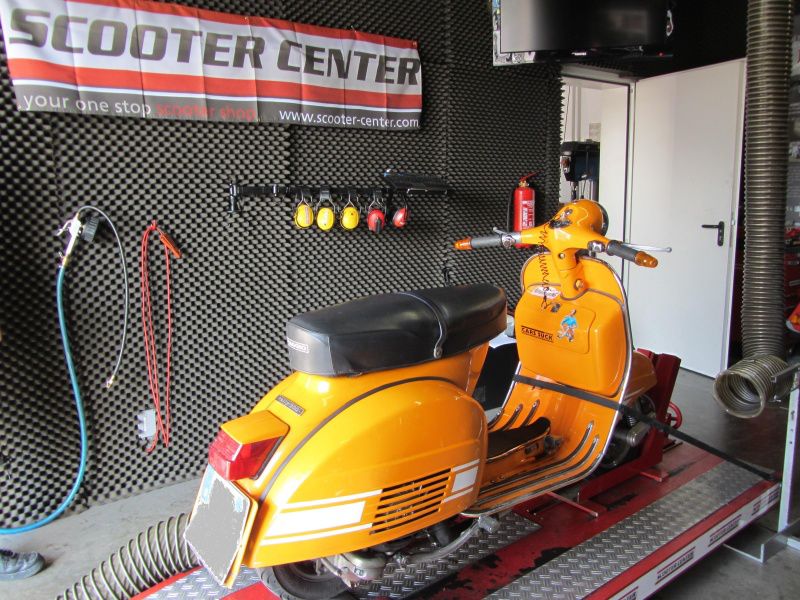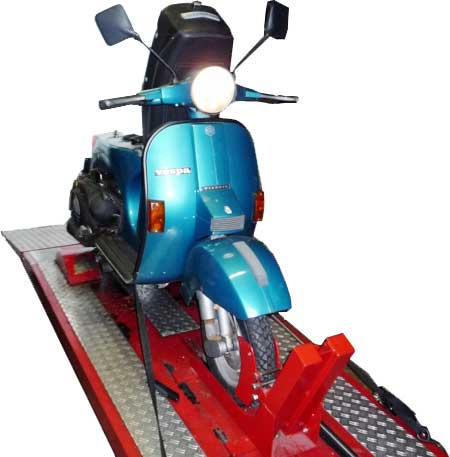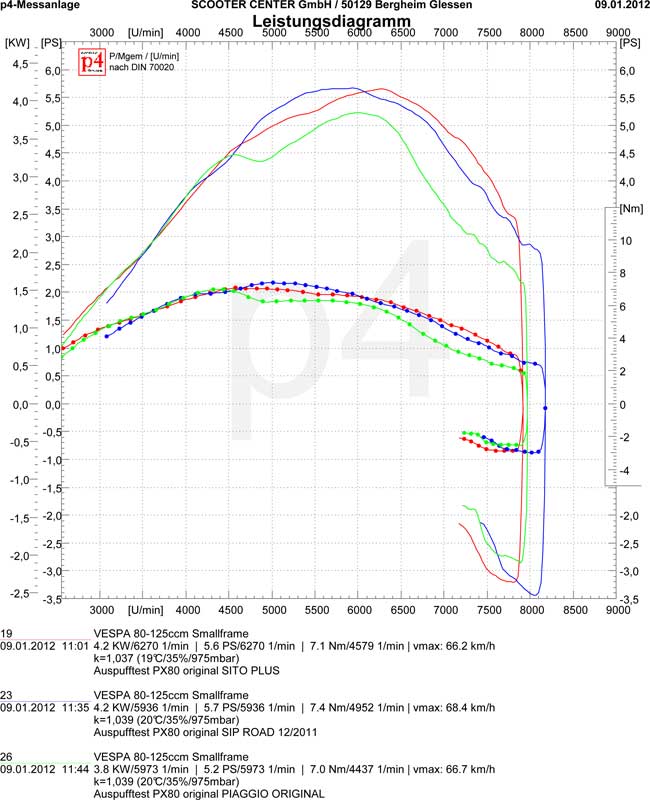Today a very nice Rally 200 was presented on our test bench.
The project to get an everyday tractor engine was well met here.

A serves as the basis PX200 motor, the rotary valve in the housing has been subtly expanded for more inlet angles before TDC. An original Piaggio comes as the crankshaft PX200 shaft used that was not processed.
The new 210 Polini will have a SI26 carburetor with Polini velocity stacks ventilated.
By the Polini velocity stacks the available torque increases very clearly in the lower speed range. For a comparable engine with Malossi cylinder Without the Polini funnel, almost 4Nm are “missing” in the same speed range!
On the outlet side, the Alu-Polini is fed by a SIP Road Exhaust supports.
From idle speed, there is a lot of torque and power.
18PS at 6000rpm and 23Nm from 4500rpm speak a clear language.
With a long Primary translation the torque, which is practically in abundance, can be stretched and high speeds can be achieved at relatively low speeds.
Very nice device!







